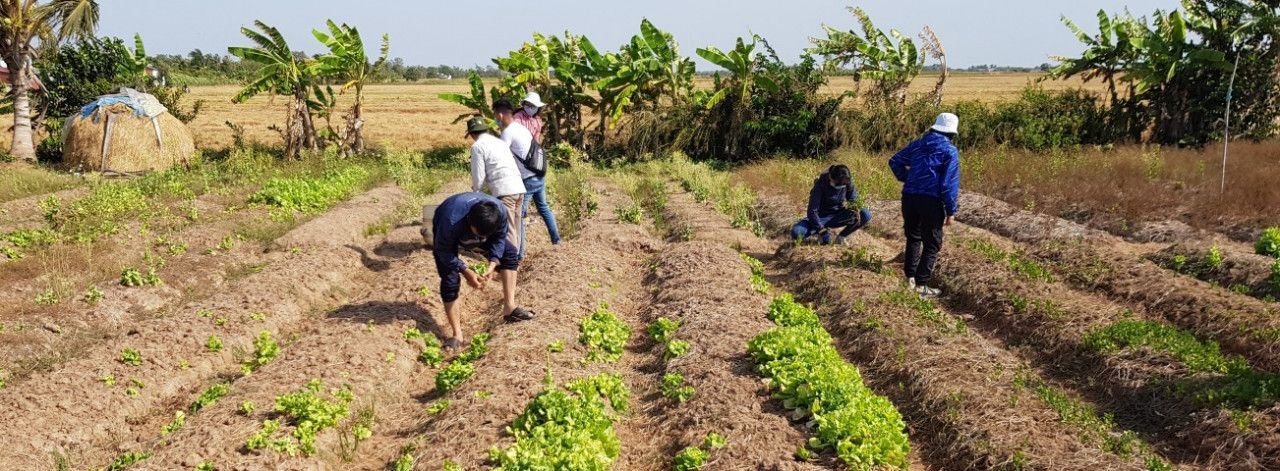
“ACCESS TO SAFE & CLEAN WATER IS A BASIC HUMAN RIGHT.”
WATER AND OUR DAILY LIFE
Have you ever wondered how important water is?Whenever we think about how much matter is water and where it has been being used, we could definitely find that our daily activities, from personal use to even manufacturing processes, are inseparable with water.In this article, I am going to present how people are accessing their drinking water, what are the different types of drinking water and what we should understand our basic commodity as a consumer. Without looking away, even our bodies, on average, make up about 60 percent of water. Our organs, cells, and tissues all require it to function properly every day. The water we drink
- regulates body temperature,
- moistens tissues in the eyes, nose and mouth,
- protects body organs and tissues,
- carries nutrients and oxygen to cells,
- lubricates joints,
- lessens the burden on kidneys and liver by flushing out waste products and
- helps dissolve minerals and nutrients to make them accessible to our body.
Therefore, being healthy or unhealthy of a person depends significantly upon how much water he/she drinks and the quality of the water he/she drinks.
WATER AND SAFETY
If so, to stay healthy, it is possible if we carefully try to drink the right amount of water every day. But getting the access to pure and right quality drinking water is still a huge challenge all over the world and especially in Myanmar.
What is a good quality of water?
Many developed countries specify drinking water quality standards to be applied in their own country, such as the European Drinking Water Directive by Europe, the Safe Drinking Water Act established by the United States Environmental Protection Agency (EPA), the Australian Drinking Water Guidelines by the Australian Government National Health and Medical Research Council (NHMRC), etc. For countries without a legislative or administrative framework for such standards, the World Health Organization (WHO) publishes guidelines on the standards that should be achieved.
Water quality parameters include chemical, physical, and biological properties and can be tested or monitored based on the desired water parameters of concern. Parameters that are frequently sampled or monitored for water quality include temperature, dissolved oxygen, pH, conductivity, color, and turbidity. See Table of Drinking Water Quality Standards with Different Guidelines.
Generally, we (the consumers) know the drinking water much have a pH value of around 7.0, colorless and tasteless, free with germs. In fact, drinking water is not enough just by purifying, and it should contain some minerals such as sodium, magnesium, calcium and fluoride with acceptable values that are helpful to our health system.
- Sodium – The human body needs sodium in order to maintain blood pressure, control fluid levels and for normal nerve and muscle function.
- Calcium – Calcium is important at all ages for healthy growth and bone development. There is good evidence to show that suitable calcium intake reduces the occurrence of osteoporosis and hip fractures. Even over 50% of North Americans could not consume the daily recommended intake of calcium according to the survey.
- Magnesium – Magnesium is another important element that has been shown important to preventing heart disease.
- Fluoride – Fluoride is naturally found in water in some areas, and intentionally added in others to reduce levels of tooth decay.
Drinking Water Sources and their Quality
At this point, we need to know what are the sources of drinking water and their respective quality. Generally, there are three main sources of drinking water:
- Rainwater – Rainwater is soft, saturated with oxygen, but flat to the taste and somewhat corrosive. Since it falls from the sky, it does not contain any harmful germs and also minerals. Its quality depends on the cleanliness of the catchment area and of the storage and the distribution system.
- Surface Water (rivers, lakes and ponds) – The quality of water taken from surface sources depends upon the character and the area of the watershed, its geology and topography. But nowadays, most of the surface sources are heavily polluted and are affected by sewage and industrial wastes and thus they are not suitable to drink directly.
- Groundwater – Generally, groundwater is clear, cold, colorless and harder than the surface water of the region in which they occur. Groundwater is less susceptible to bacterial pollution than surface water because the soil and rocks through which groundwater flows screen out most of the bacteria. Groundwater may also contain dissolved minerals and gases that give it the tangy taste enjoyed by many people. The most common dissolved mineral substances are sodium, calcium, magnesium, potassium, chloride, bicarbonate, and sulfate.
Among the above three sources, groundwater had been considered as the most suitable water for drinking because it is free from bacteria and full of minerals that are needed by our body.
However, in recent years, because of the human activities such as disposing of municipal and industrial wastes and overuse of chemical fertilizers, herbicides, and pesticides, the quality of groundwater has been degraded significantly and it is not suitable to drink directly.
Is Tap Water Safe?
When taking a look at the Myanmar’s water supply system, cities like Yangon, Mandalay, etc. are supplied with the water supply system. Approximately 90% of water supplied by City Development Committee comes from reservoirs, supplemented by tube wells. The water distribution is through pipes to the users from the treatment plant, while in other cities, private wells are mainly used. Although the city water supply system provides water only after purifying, that tap water is just safe for other domestic purposes, not safe for drinking.
According to the study paper “A Traveler’s Guide to Tap Water”, there are many countries where tap water is unsafe to drink. According to the United States Centers for Disease Control and Prevention, the tap water of the whole continent of Africa and South America is not safe to drink.
Similarly, except Brunei, Hong Kong, Israel, Japan, Singapore, South Korea, almost the whole continent of Asia has no safe tap water. It has expressed that also tap water in our Myanmar is not safe to drink.
 Types of Drinking Water that people are accessing.
Types of Drinking Water that people are accessing.
Evolution of Drinking Water in Myanmar
- Boiled Water
As far as I know, in the time of our older generations, water from the tube wells or rivers or lakes was boiled and stored in pottery for drinking purposes. Boiled water can kill germs, but it does not remove heavy metals such as lead, debris, nitrates and pesticides and might not contain some of the required minerals.
- Tap Water
On the other hand, people have to use water from the spigot or valve, in other words supplied by the city water supply system. In countries like the US, tap water was found safe to drink. But in Myanmar, because of the leakage and insufficient treatment steps, those tap water are not safe to drink. But it can be portable with the use of household filtration products.
- Bottled Water (Purified Water)
Starting over the past decade, in major cities, the use of bottled water has begun to flourish. Also, at present, even many small towns start using bottled water, so called purified water. Purified water is water that has been filtered or processed to remove impurities like chemicals and other contaminants. It is usually produced using groundwater or tap water. Through purification, many types of impurities are removed, including Bacteria, Algae, Fungi, Parasites, Metals like copper and lead, Chemical pollutants and so on. Therefore, purified water can be said to be safe to drink if it follows up the guidelines.
So, is it safe to drink these so-called purified drinking water?
So, is it safe to drink these so-called purified drinking water?
In a news article published by Eleven Media in 2015, the Food and Drug Administration (FDA) issued 73 brands of drinking water that are unsafe to drink. It has been announced that this is due to non-compliance with the standard step-by-step procedures and uncleanness of water bottles. Are the various brands of drinking water currently distributed safe? Even if it is safe, does it have enough minerals to support and function our body well? We, the consumers, need to know and should know too.
- Mineral Water
In fact, there is another type of water available on the market. Mineral water comes from natural underground reservoirs and mineral springs, giving it a higher mineral content than tap water and purified water.
However, one of the main downsides to mineral water is cost. Mineral water products on the market like Evian, Fiji etc. at present are many times more expensive than bottled water, not even tap water.
Thus, it is up to our decision which water we are going to drink.
 What will be the best choice for us?
What will be the best choice for us?
Although there are many choices for us and it is true that everyone wants the best things, not everyone could afford mineral water which is beneficial to health system. As it is saying that “access to safe drinking-water is a basic human right”, in my opinion, the city supply system should be upgraded in order to provide drinkable tap water with certain minerals by adapting the advanced technology. On the other hand, water purified industries should express what kind of contents containing their products and should emphasize on cleanness. For now, we couldn’t know the exact and just accept and drink even they are not clean enough. So, the Food and Drug Administration (FDA) should check regularly and urge them to follow the hygiene standards. One more important thing is the public also should have awareness on water quality that they drink every day. .
In the future, we will still have to work hard to transform tap water as drinking water like other developed countries such as Singapore, United State, etc.
##References
- How much water should I drink?
- Water: Essential to your body
- Drinking Water Quality Standards
- Sodium in Drinking Water
- Quality of Ground Water
- A Travelers Guide to Tap Water
- Water Supply, Waste Disposal and Environmental Engineering by A.K. Chatterjee.
By Thandar l Myanmar Water Portal
Related Article:

Paying too much for drinking water? Here is what you can do – Myanmar Water Portal
In Myanmar, as in many other Southeast Asian countries, you cannot drink water from the tap. Buying water is expensive and conventional treatment methods are inconvenient. A Dutch couple made it their mission to make getting safe drink https://www.myanmarwaterportal.com/news/1172-we-pay-to-much-for-bad-quality-drinking-water,-here-is-what-you-can-do.html











